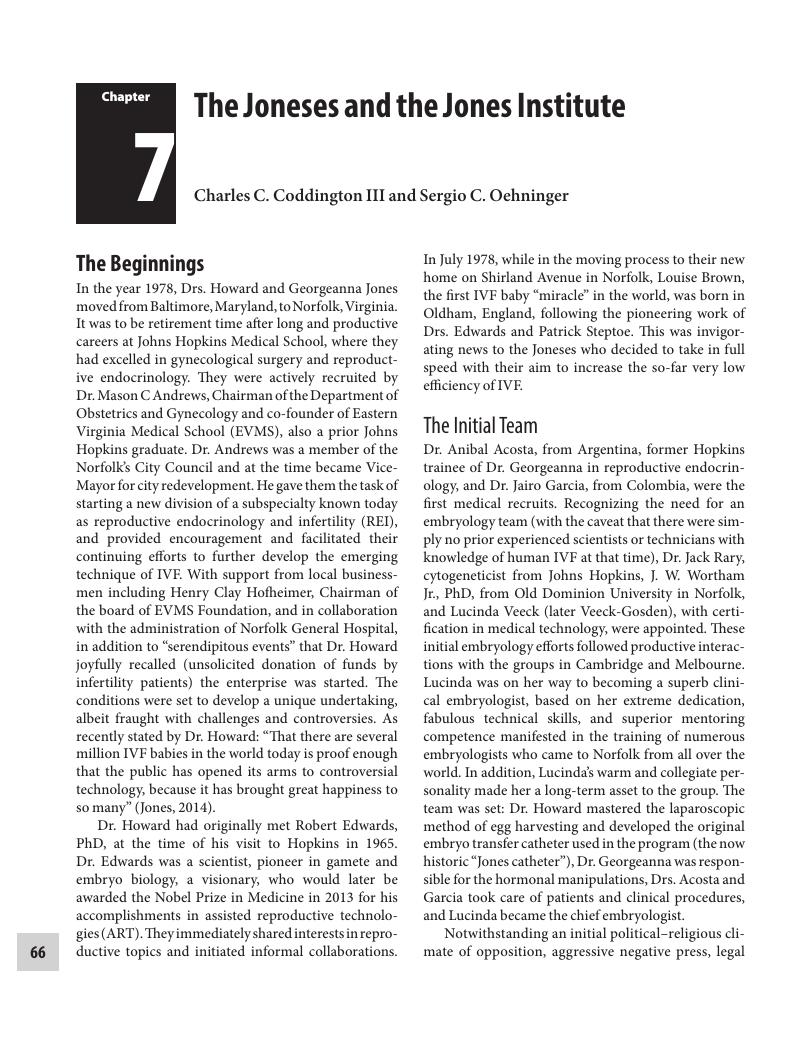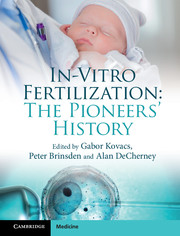Book contents
- In-Vitro Fertilization The Pioneers' History
- In-Vitro Fertilization The Pioneers' History
- Copyright page
- Contents
- Contributors
- Preface
- Chapter 1 A Brief Outline of the History of Human In-Vitro Fertilization
- Chapter 2 The Track to Assisted Reproduction: From Animal to Human In-Vitro Fertilization
- Chapter 3 The American Roots of In-Vitro Fertilization
- Chapter 4 The Story of Patrick Steptoe, Robert Edwards, Jean Purdy, and Bourn Hall Clinic
- Chapter 5 Professional Hostility Confronting Edwards, Steptoe, and Purdy in their Pioneering Work on In-Vitro Fertilization
- Chapter 6 The Development of In-Vitro Fertilization in Australia
- Chapter 7 The Joneses and the Jones Institute
- Chapter 8 The Development of In-Vitro Fertilization in North America After the Joneses
- Chapter 9 The Brussels Story and the Eureka Moment of Intracytoplasmic Sperm Injection
- Chapter 10 The Development of In-Vitro Fertilization in Austria
- Chapter 11 The Development of In-Vitro Fertilization in France
- Chapter 12 The Development of In-Vitro Fertilization in Italy
- Chapter 13 The Development of In-Vitro Fertilization in Scandinavia
- Chapter 14 The Development of In-Vitro Fertilization in Spain
- Chapter 15 The Development of In-Vitro Fertilization in Greece, Germany, and The Netherlands
- Chapter 16 The Development of In-Vitro Fertilization in Israel
- Chapter 17 The Development of In-Vitro Fertilization in Latin America
- Chapter 18 The Development of In-Vitro Fertilization in India
- Chapter 19 The Development of In-Vitro Fertilization in China
- Chapter 20 The Development of In-Vitro Fertilization in Africa
- Chapter 21 The Development of In-Vitro Fertilization in Russia
- Chapter 22 The Application of In-Vitro Fertilization in the Management of the Infertile Male
- Chapter 23 The Development of Preimplantation Genetic Diagnosis for Monogenic Disease and Chromosome Imbalance
- Chapter 24 The Development of Embryo, Oocyte, and Ovarian Tissue Cryopreservation
- Chapter 25 The Development of Ovarian Stimulation for In-Vitro Fertilization
- Chapter 26 The Development of Microsurgery for Male and Female Infertility
- Chapter 27 Embryonic Stem Cells: Medicine's New Frontier
- Chapter 28 The Regulation and Legislation of In-Vitro Fertilization
- Chapter 29 Research on Assisted Reproduction Families: A Historical Perspective
- Chapter 30 The Commercialization of In-Vitro Fertilization
- Index
- References
Chapter 7 - The Joneses and the Jones Institute
Published online by Cambridge University Press: 09 June 2018
- In-Vitro Fertilization The Pioneers' History
- In-Vitro Fertilization The Pioneers' History
- Copyright page
- Contents
- Contributors
- Preface
- Chapter 1 A Brief Outline of the History of Human In-Vitro Fertilization
- Chapter 2 The Track to Assisted Reproduction: From Animal to Human In-Vitro Fertilization
- Chapter 3 The American Roots of In-Vitro Fertilization
- Chapter 4 The Story of Patrick Steptoe, Robert Edwards, Jean Purdy, and Bourn Hall Clinic
- Chapter 5 Professional Hostility Confronting Edwards, Steptoe, and Purdy in their Pioneering Work on In-Vitro Fertilization
- Chapter 6 The Development of In-Vitro Fertilization in Australia
- Chapter 7 The Joneses and the Jones Institute
- Chapter 8 The Development of In-Vitro Fertilization in North America After the Joneses
- Chapter 9 The Brussels Story and the Eureka Moment of Intracytoplasmic Sperm Injection
- Chapter 10 The Development of In-Vitro Fertilization in Austria
- Chapter 11 The Development of In-Vitro Fertilization in France
- Chapter 12 The Development of In-Vitro Fertilization in Italy
- Chapter 13 The Development of In-Vitro Fertilization in Scandinavia
- Chapter 14 The Development of In-Vitro Fertilization in Spain
- Chapter 15 The Development of In-Vitro Fertilization in Greece, Germany, and The Netherlands
- Chapter 16 The Development of In-Vitro Fertilization in Israel
- Chapter 17 The Development of In-Vitro Fertilization in Latin America
- Chapter 18 The Development of In-Vitro Fertilization in India
- Chapter 19 The Development of In-Vitro Fertilization in China
- Chapter 20 The Development of In-Vitro Fertilization in Africa
- Chapter 21 The Development of In-Vitro Fertilization in Russia
- Chapter 22 The Application of In-Vitro Fertilization in the Management of the Infertile Male
- Chapter 23 The Development of Preimplantation Genetic Diagnosis for Monogenic Disease and Chromosome Imbalance
- Chapter 24 The Development of Embryo, Oocyte, and Ovarian Tissue Cryopreservation
- Chapter 25 The Development of Ovarian Stimulation for In-Vitro Fertilization
- Chapter 26 The Development of Microsurgery for Male and Female Infertility
- Chapter 27 Embryonic Stem Cells: Medicine's New Frontier
- Chapter 28 The Regulation and Legislation of In-Vitro Fertilization
- Chapter 29 Research on Assisted Reproduction Families: A Historical Perspective
- Chapter 30 The Commercialization of In-Vitro Fertilization
- Index
- References
Summary

- Type
- Chapter
- Information
- In-Vitro FertilizationThe Pioneers' History, pp. 66 - 74Publisher: Cambridge University PressPrint publication year: 2018
References
- 1
- Cited by



